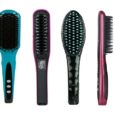Iron-on patches are a creative way to personalize clothing, repair damage, or add a touch of style. Whether you’re upgrading your favorite denim jacket or showcasing school spirit with varsity jacket patches, selecting the right fabric is crucial for the best results.

When it comes to adhering patches, not all materials are created equal. Understanding the characteristics of various fabrics can help you avoid frustration and ensure longevity. In this article, we’ll be exploring fabrics most suitable for iron-on patches. We’ll talk about their features, strengths, and why they’re the go-to choices for patch enthusiasts.
7 fabrics that are perfect for iron-on patches
The success of iron-on patches depends on the fabric’s ability to withstand the iron’s heat and provide a firm surface for the adhesive to grip. Let’s look at a few fabric options that are perfect for iron-on patches.
1. Cotton
Cotton is a popular choice for iron-on patches due to its heat-resistant and breathable properties. It works well for many garments, from casual wear to fancy jackets, and provides a smooth surface for patches to bond securely.
Garments made from 100% cotton are excellent for applying patches. This durable fabric handles heat well, making patch application easy and successful. Additionally, cotton fabrics hold vibrant colors well, which is important when you’re using patches with intricate or colorful designs. With cotton, you can be confident that the patches will adhere without causing damage to the fabric or losing their design integrity over time.
2. Denim
Denim, popular for skirts, jackets, and jeans, is a great choice for iron-on patches. The heavy weave and smooth finish helps keep patches in place, even after washing and regular use. Additionally, denim can withstand higher temperatures better than delicate fabrics, allowing for effective iron-on application without damage. Whether vintage or new, denim is an excellent option for patchwork projects. So, get your favorite patch designed as per your preference, and add it to your denim wear the way you like.
3. Polyester
Polyester fabrics work well for iron-on patches but need more care. Since polyester’s synthetic fibers can be sensitive to high heat, it’s crucial to adjust the iron’s temperature. When you’re applying patches to polyester, remember to always check the manufacturer’s guidelines to prevent damaging the fabric. Also, note that polyester is often used in varsity jackets, especially for the outer shell. So, if you are looking to add your customized varsity jacket patches, this material is highly recommended with properties like smooth surface and resistance to wrinkles and shrinking.
4. Canvas
Canvas is a strong and durable fabric that is great for applying iron-on patches. Commonly used in bags, shoes, aprons, and other accessories, it has a thick texture that ensures the adhesive bonds securely to the fabric. Canvas is often the fabric of choice for functional items like backpacks and workwear, as well as for stylish accessories like tote bags.
The heat from an iron works well to bond patches to the fabric. The weave of canvas is more textured than cotton or polyester, offering a robust surface for patches to adhere securely. This makes it ideal for adding custom patches to personal items. Canvas also comes in different weights and finishes, allowing you to choose what suits your project best.
5. Leather
Leather presents a unique but manageable challenge for iron-on patches. While these materials offer a sleek, fashionable surface, they can be tricky when it comes to applying iron-on patches due to their smooth, non-porous texture.
Genuine leather is more sensitive to heat than most other fabrics, and excessive heat can cause it to scorch or burn. However, when applied with care, iron-on patches can still be successfully attached to your favorite bonanza leather jacket. Just remember to test a small section first to ensure the heat doesn’t damage the material. Also, make sure to use a protective barrier, such as parchment paper, between the iron and the leather surface to ensure that the heat doesn’t directly touch the material. Once you take all the necessary precautions, you can surely steal the spotlight with a cool leather jacket with a customized patch.
6. Wool and Wool Blends
Wool and wool-blend fabrics used for cold-weather clothing like coats, scarves, and sweaters are great for iron-on patches. Wool offers a slightly textured surface that provides a good base for patches to adhere. Plus, the material is naturally heat-resistant, making it suitable for use with iron-on patches.
However, it’s important to avoid the highest heat setting on the iron, as some wool may shrink. Using moderate heat with a press cloth is the safest method for applying patches to this material.
7. Twill Fabrics
Twill is a strong and flexible fabric often used for uniforms, workwear, and casual clothing. Its diagonal weave gives it a textured surface that securely holds patches. Whether it’s a jacket, pants, or shirt, twill fabrics are a reliable choice for iron-on patches, especially in professional or school-related settings.
The texture of twill allows for the easy addition of embroidery or logos, as the adhesive sticks well. The fabric’s moderate weight and durability make it suitable for items like jackets and uniforms. Applying patches to twill is a relatively straightforward process, as the fabric is sturdy enough to withstand the heat needed for patch adhesion without warping or damage.
Parting Thoughts
Selecting the right fabric for iron-on patches is crucial to achieving a strong, lasting bond and ensuring your patches stay in place. This will also ensure you grab the right attention in the crowd. Fabrics like cotton and denim offer the ideal combination of heat resistance, texture, and durability.
Whether you’re adding a personal touch to a boring jacket, making your jeans stand out, customizing a varsity jacket, or enhancing everyday wear, the right material ensures your patches adhere properly and maintain their appearance over time. By understanding the characteristics of each fabric, you can confidently create customized pieces that stand the test of time, combining both style and functionality in your attire.




